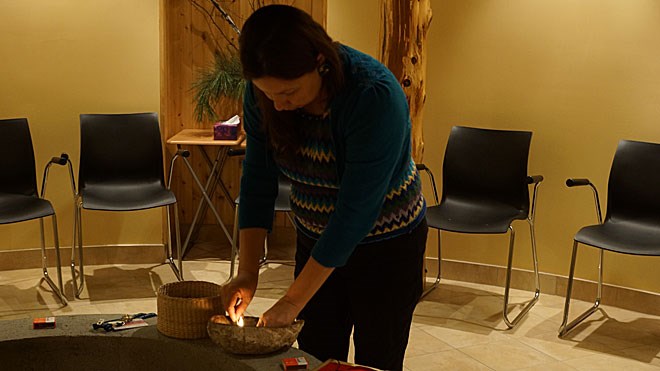First Nations patients are often diagnosed for cancers later than the general population because their access to health care is limited, due to distance and cultural barriers.
“They're not accessing the health care system in the same way that non-Native patients are accessing the health care system,” said Sherri Baker, Aboriginal patient navigator for the hospital's Northeast Cancer Centre.
Baker's position has only existed for two years, and is part of recent initiatives from the hospital to break down the barriers Aboriginal people face when they try to access health care.
“There's still a lack of trust between the Canadian government and First Nations people,” Baker said. “We're trying to bring in cultural safety and break down those barriers for First Nations people so they can access the health care system.”
Baker, a social worker, co-ordinates with patients and health care workers in remote First Nations communities as far as the James Bay coast, to help them navigate health care services when they come to the Northeast Cancer Centre for their treatment.
“Patients are so vulnerable when they have cancer diagnoses. It's such an incredibly difficult and emotionally distressing time for them,” Baker said.
She said her clients experience culture shock when they arrive in Sudbury, which is much larger and more hectic than their home communities.
A lot of them speak English only as a second language, or not at all, and need translation services to know where they need to be, and what is expected of them for their treatment.
Baker works closely with the hospital's Aboriginal Medicine Lodge, which was established in 2010 to ease Aboriginal patients' transitions to the hospital, and educate staff to be culturally sensitive to their needs.
The lodge is located on the hospital's second floor, near the Tim Hortons and resembles a ski lodge with its wood beams and ceiling.
“It's not just about a place anymore, it's really about implementing programs and services to support the concepts of access to care and smooth transitions between the hospital and home,” said Mark Hartman, Health Sciences north's vice-president of cancer services and medical imaging.
The medical lodge gives Aboriginal people a place where they can practice their cultural beliefs.
For palliative patients, the lodge can provide a traditional First Nations ceremony before the person passes on – similar to the last rites for a Catholic.
In the future, the lodge could also provide access to traditional medicine, Hartman said.
But providing access to traditional medicine could be some time away, and would not be the medicine lodge's main purpose, said Angela Recollet, executive director of the Shkagamik-Kwe Health Centre.
Recollet and other First Nations advocates in Sudbury played a major role in launching the medicine lodge. She said it fills a vital role in the community.
“More institutions like HSN are responding to community needs and ensuring there is traditional care available to (patients) while in hospital,” Recollet said.
As for incorporating traditional medicine, Recollet said patients should be free to choose the type of care they want.
“I believe every individual from our human family has a right to care, and whatever care that may be,” she said.
The topic of alternative healing has garnered controversy as of late, when Ontario Court of Justice Gethin Edward ruled Aboriginal parents were within their rights to cease their child's chemotherapy in favour of an alternative healing outfit in Florida registered as a massage parlour.
Their 11-year-old child was given a 95-per-cent chance to survive her leukemia if she continued her chemotherapy.
Dr. Peter Zalan, president of Health Sciences North's medical staff, said he is in favour of traditional healing practices if they are complimentary to modern medicine.
“I think you need to marry the two,” he said. “Modern medicine has a lot to offer, but the traditional values contribute to their emotional health.”
Zalan said traditional medicine can be a positive bridge to introduce First Nations people to the medical system, when they might avoid such services otherwise.
“You have to talk to people in the context of their culture and belief system,” he said.
Join Sudbury.com+
- Messages
- Post a Listing
- Your Listings
- Your Profile
- Your Subscriptions
- Your Likes
- Your Business
- Support Local News
- Payment History
Sudbury.com+ members
Already a +member?
Not a +member?
Sign up for a Sudbury.com+ account for instant access to upcoming contests, local offers, auctions and so much more.
